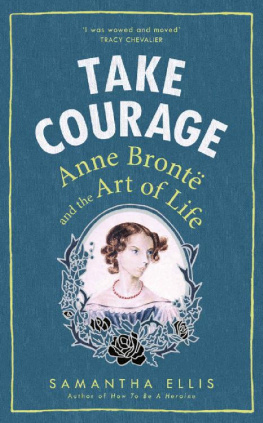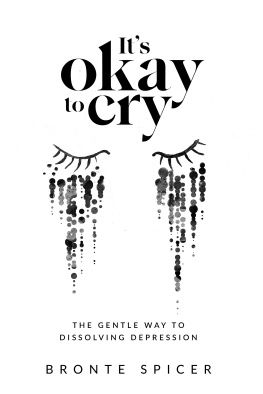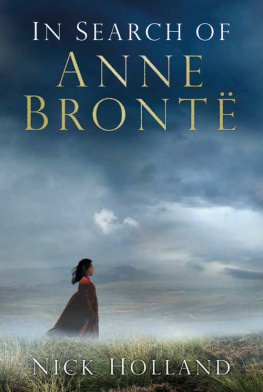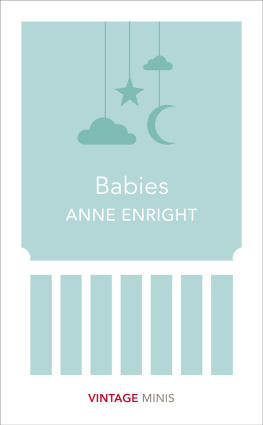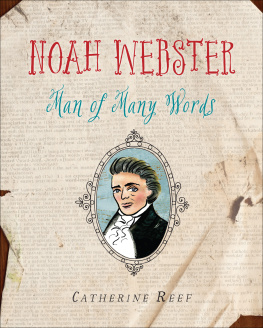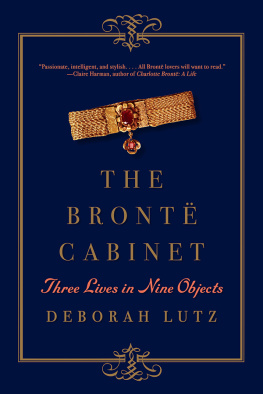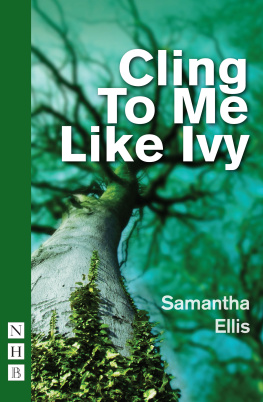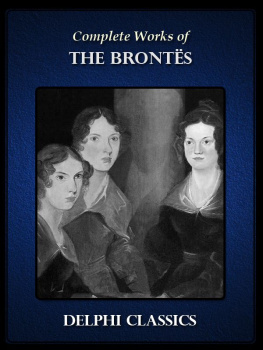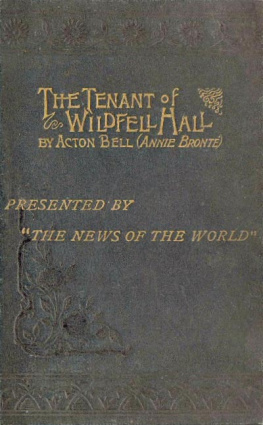Samantha Ellis - Take Courage: Anne Brontë and the Art of Life
Here you can read online Samantha Ellis - Take Courage: Anne Brontë and the Art of Life full text of the book (entire story) in english for free. Download pdf and epub, get meaning, cover and reviews about this ebook. year: 2017, publisher: Random House, genre: Non-fiction / History. Description of the work, (preface) as well as reviews are available. Best literature library LitArk.com created for fans of good reading and offers a wide selection of genres:
Romance novel
Science fiction
Adventure
Detective
Science
History
Home and family
Prose
Art
Politics
Computer
Non-fiction
Religion
Business
Children
Humor
Choose a favorite category and find really read worthwhile books. Enjoy immersion in the world of imagination, feel the emotions of the characters or learn something new for yourself, make an fascinating discovery.
- Book:Take Courage: Anne Brontë and the Art of Life
- Author:
- Publisher:Random House
- Genre:
- Year:2017
- Rating:5 / 5
- Favourites:Add to favourites
- Your mark:
- 100
- 1
- 2
- 3
- 4
- 5
Take Courage: Anne Brontë and the Art of Life: summary, description and annotation
We offer to read an annotation, description, summary or preface (depends on what the author of the book "Take Courage: Anne Brontë and the Art of Life" wrote himself). If you haven't found the necessary information about the book — write in the comments, we will try to find it.
Take Courage: Anne Brontë and the Art of Life — read online for free the complete book (whole text) full work
Below is the text of the book, divided by pages. System saving the place of the last page read, allows you to conveniently read the book "Take Courage: Anne Brontë and the Art of Life" online for free, without having to search again every time where you left off. Put a bookmark, and you can go to the page where you finished reading at any time.
Font size:
Interval:
Bookmark:
Anne Bront is the forgotten Bront sister, overshadowed by her older siblings virtuous, successful Charlotte, free-spirited Emily and dissolute Branwell. Tragic, virginal, sweet, stoic, selfless Anne. The less talented Bront, the other Bront.
Or thats what Samantha Ellis, a life-long Emily and Wuthering Heights devotee, had always thought. Until, that is, she started questioning that devotion and, in looking more closely at Emily and Charlotte, found herself confronted by Anne instead.
Take Courage is Samanthas personal, poignant and surprising journey into the life and work of a woman sidelined by history. A brave, strongly feminist writer well ahead of her time and her more celebrated siblings and who has much to teach us today about how to find our way in the world.
Samantha Ellis is a playwright and journalist. Her first book How To Be A Heroine was published in 2014. Her plays include Cling to Me Like Ivy, Operation Magic Carpet and How to Date a Feminist. She has written for the Guardian, Observer, TLS, Spectator, Literary Review, the Pool, Exeunt and more. She lives in London.
How To Be A Heroine

For Jude
Until I found myself holding Anne Bronts last letter in my hands, I thought I knew all I needed to know about her. I thought she was a virginal Victorian spinster, sweet and stoic, selfless and sexless, achieving very little before wasting away at twenty-nine. Emily had always been my top Bront. Id come to appreciate Charlottes toughness and spirit. Id sometimes thought it might be fun to have a drink with Branwell. But Anne had always seemed a bit, well, boring. Gentle. Pious. Meek. The less talented Bront, the one in her sisters shadow, the other Bront.
Im in Yorkshire, giving a reading from my last book, which pitched Wuthering Heights against Jane Eyre. While Im here, Ann Dinsdale, the collections manager at the Bront Parsonage Museum in Haworth, offers to show me some Bront treasures and no Bront fan could refuse.
Its my first time meeting Ann Dinsdale but I have often seen her on TV; every time theres some new Bront discovery, she appears, white-gloved, dressed in black, with a fierce dark bob and a slash of red lipstick. Its a blowy May morning and the Parsonage is empty except for us; this is the lull before it opens to the public.
Ann leads me through the kitchen, which is kept as if the Bronts have just popped out for a moment. A book leans against an old-fashioned set of scales, the black range gleams like it has just been polished, tea towels have been hung up as if to dry and a red tea cosy sits ready to warm a pot. Undoing the cordon, careful not to set off the alarms, Ann opens a heavy wooden door, and then we are in the annexe added after the Bronts time, which is now the library, lined with glass-fronted, floor-to-ceiling bookcases in dark wood, full of everything you ever wanted to know about the Bronts and quite a lot you didnt. There are three desks squashed up by the windows, which look out onto the moors, rain spattering the glass, sheep shivering. A yellowing newspaper clipping taped to a filing cabinet reads, In Austen, sex is just a kiss on the hand. In the Bronts, everything happens. I assume it refers to Wuthering Heights, but Ann says, no, it is about Annes second novel, The Tenant of Wildfell Hall. Then, as I sit at the long table, and put on latex gloves, she asks if I want to see Annes last letter. Im more interested in looking at some of the other treasures Emilys drawing of a fist smashing a mullioned window (whose fist? whose window?), and the book Charlotte and Branwell made, on scraps of paper and sugar bags, in writing tiny enough for their toy soldiers to read but when I actually read Annes letter, I get a shock.
I had read a lot about Annes death, more than about her life. The accounts of it ooze high-Victorian sentiment. As a death scene it has everything: a virtuous heroine, piteous coughing, heartfelt prayer, sledgehammers of pathos and mawkish hints of a glorious ascent to heaven. In the books Id read, poor consumptive Anne slipped out of life on a couch in Scarborough in May 1849, as Charlotte wept beside her. They both knew she was Going To A Better Place, and although she was only twenty-nine, she was ready, because, as Charlotte said, Anne, from her childhood, seemed preparing for an early death.
Annes death was quiet, like a death Charles Dickens had imagined eight years earlier. In The Old Curiosity Shop, his heroine, Little Nell, dies in silence. Not just any silence: Angel hands have strewn the ground deep with snow, that the lightest footstep may be lighter yet; and the very birds are dead, that they may not wake her. Yes, thats right: birds have been killed, or maybe sacrificed themselves, or died of broken hearts, so Nell can die in perfect quietness. She was dead, Dickens intones, again and again, his noisy grief eclipsing his dull, wan heroine. Nell is almost an angel herself. So is another dying Victorian heroine; in Louisa May Alcotts 1868 weepie, Little Women, Beths sister can see, just by looking at her, that the mortal was being slowly refined away, and the immortal shining through the frail flesh with an indescribable pathetic beauty.
Alcott felt very connected to the Bronts. She also had a father with strong beliefs (hers was a transcendental philosopher who almost killed his family by making them live on a vegan commune which didnt use noxious manure or oppress animals by making them plough the fields). She also grew up poor and burned to write. She was also intensely close to her siblings. In 1857, while her sister was dying, Alcott devoured Elizabeth Gaskells biography of Charlotte Bront and wrote in her diary, Wonder if I shall ever be famous enough for people to care to read my story and struggles. When she wrote her story and struggles into Little Women, she cast herself as conflicted, clever Jo while Beth was a mix of her own sister and Anne Bront, as she came over in Gaskells book; a sweet, passive girl who never dreams of the future or makes plans because she is convinced she was never intended to live long. Shes so resigned and insipid that she is hard to like.
Reading Annes last letter, I feel Alcott has got her wrong, and Gaskell too, and maybe even Charlotte. Its like meeting a completely different woman.
Anne wrote the letter five weeks before her death, on 5 April 1849. The paper is bordered in black because Anne was in mourning for Branwell and Emily, who had died seven and four months before respectively. The letter is cross-written. To save paper, and postage, after writing each page, Anne turned it ninety degrees and wrote over (crossed) the words she had written already. It took skill to cross-write; you had to space out the first lines so that the crossed lines could fit into the spaces between words. You had to be achingly neat. Although Anne was very ill, and weak, her writing is elegant, slanted and clear. The letter was a physical effort to write, and it took courage too, because it was an act of defiance. Anne was writing to ask Charlottes lifelong friend Ellen Nussey to go to Scarborough with her, a place she loved, in the hope that it would cure her tuberculosis. Nussey was up for it, but Charlotte had written behind Annes back, to tell her to refuse. Charlotte didnt think Anne was well enough to travel, she didnt think the cure would work, and maybe in the back of her mind, too, was her idea that Anne was preparing for an early death. But in Annes letter, she is full of hope and spirit. She wants to live, because I long to do some good in the world before I leave it. I have many schemes in my head for future practise humble and limited indeed but still I should not like them all to come to nothing, and myself to have lived to so little purpose. This catches at my heart, and makes me breathe hard suddenly. I put the letter down. This Anne knew what she wanted. She had published two novels and many poems. She didnt want to have to stop. She was courageous, she was tough, and she wanted more life.
Font size:
Interval:
Bookmark:
Similar books «Take Courage: Anne Brontë and the Art of Life»
Look at similar books to Take Courage: Anne Brontë and the Art of Life. We have selected literature similar in name and meaning in the hope of providing readers with more options to find new, interesting, not yet read works.
Discussion, reviews of the book Take Courage: Anne Brontë and the Art of Life and just readers' own opinions. Leave your comments, write what you think about the work, its meaning or the main characters. Specify what exactly you liked and what you didn't like, and why you think so.

